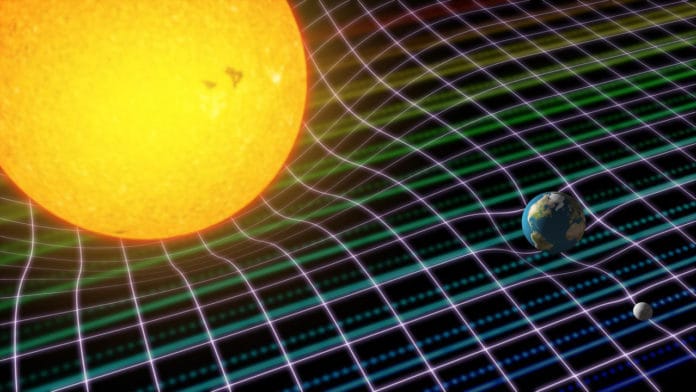The General Theory of Relativity introduced space and time by showing that massive objects distort space-time, which is felt as gravity. This way, Einstein’s hypothesis predicts, for instance, that light goes in curved paths near massive objects.
One consequence is the observation of the Einstein Cross, four different images of a distant galaxy which lies behind a nearer massive object, and whose light is distorted by it.
Other notable effects of General Relativity are the observed continuous change in Mercury’s orbit because of space-time curvature around the Sun, or the gravitational redshift. Gravitational redshift is the displacement to the red lines in the spectrum of the Sun because of its gravitational field.
In 1920, Einstein wrote, “For the Sun, the theoretical redshift predicted is approximately two-millionths of the wavelength.”
Whether this effect exists is an open question, and astronomers are currently working hard to resolve it. For the Sun, its existence is difficult to judge because the effect is so small.
Now, an international team of researchers led by the Instituto de Astrofísica de Canarias (IAC) has measured the gravitational redshift of the Sun with unprecedented accuracy.
To gauge it, the scientists have utilized observations of the solar spectrum reflected from the Moon. The observations were obtained with the HARPS (High Accuracy Radial velocity Planet Searcher) instrument using the laser frequency comb technology.
Jonay González Hernández, a Ramón y Cajal researcher at the IAC and first author of the article, said, “Combining the precision of the HARPS instrument with the laser frequency comb, we have been able to measure with high accuracy the position of the iron lines in the solar spectrum. This has enabled us to verify one of the predictions of Einstein’s Theory of General Relativity, the gravitational redshift, to a precision of just a few meters per second.”
Rafael Rebolo, a researcher and the Director of the IAC, said, “New measurements with the laser frequency comb attached to the ESPRESSO spectrograph, on the 8.2 m VLT telescopes, would allow us to improve these measurements.”
Journal Reference:
- González Hernández, J. I., Rebolo, R., Pasquini, L., et al. “The solar gravitational redshift from HARPS-LFC Moon spectra. A test of the General Theory of Relativity.” A&A, 2020: arXiv_2009.10558
